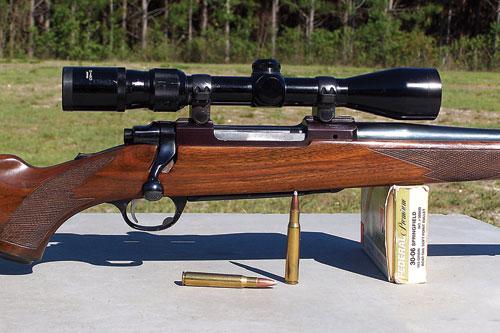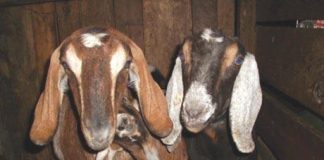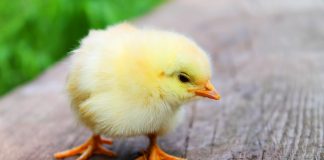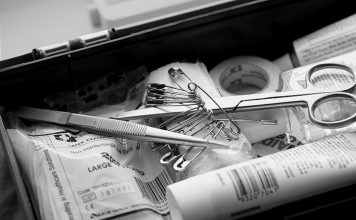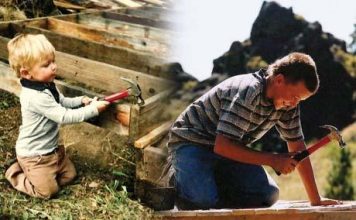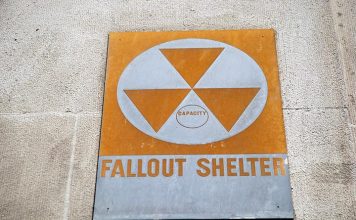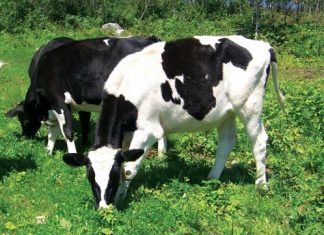 |
|
| Issue #155 • September/October, 2015 |
As summer blends into fall, “deer season” is on the horizon. In the United States, the deer is by far the most popular big game. When I was a young adult, author Euell Gibbons popularized hunting for mushrooms and herbs and other edibles in the wild. To those of us carnivores who spent our formative years in places like my beloved New Hampshire, deer were like those mushrooms: natural bounty to be harvested and taken for our nourishment. It was a bonus to know that we had taken it by our hard labor in the wild, instead of buying it in a grocery store or a butcher shop.

Pre-season “photo safari” and scouting for sign can pay dividends on opening day of deer season.
And, you know what? It’s still that way.
In many an American home, “winter venison” is still a staple in the larder. But you don’t just go out and shoot a deer. There is groundwork to be laid.
As the late Mr. Gibbons made clear, before you pick the mushroom you have to find the mushroom … and you have to make sure you found the right mushroom.
Things to consider
If you’re new to this whole hunting business, the first thing you need to know is that you most certainly do need a license to hunt and harvest wildlife. Your state has an agency that handles this: the name may be Fish & Wildlife, Game & Fish, or something close to that (it varies state by state), but it will be easy enough to find in the public service section of your telephone book. You’ll also find information at any outdoor sports store, or in the sporting goods section of all but the most “citified” WalMart. Read their handbooks carefully. Dot every “i” and cross every “t” when you get the hunting license. Expect to go through a hunter safety program your state agency’s handbook will tell you how and where to find one near you and pay close attention.
“But, I’m on my own property!” someone cries. Yes, you are. In some states, you are allowed to shoot deer that are eating your crops. In other states, you’ll need a special license from that Fish & Game Department to do so. It would be awfully smart of you to find out what the rules are where you live before you start doing that.
Once all that is taken care of, you want to look at some basics if you’re new to deer hunting. Those would include:
Are you allowed to put out corn or even salt licks to bring the deer to you? Even on your own property? The laws may vary. Check that out beforehand.
In the 1970s, I went hunting with friends in a certain Southern state, and was shocked to discover that hunting deer with hounds was legal. It certainly wasn’t where I came from. Different places have different cultures, and different cultures have different rules. A part of that comes from the fact that there are some places where deer are thin on the ground, so the rules make it harder for you to “catch” them, and there are some places where deer proliferate like rabbits and it is in the best interest of their society for as many of them to be harvested as is possible. Discuss how you feel about those things later, on an electronic forum or someplace, but follow the rules that hold sway when you are doing your hunting.
Once you’ve got all that squared away, it’s time to find out where the deer are, and time to prepare yourself to shoot them cleanly and humanely or not shoot them at all once you have them in your sights.

Make sure you sight in with the exact same ammo you plan to use on the hunt, and know your trajectory at predictable distances. .30-06 rifle is a Ruger Model 77.
Finding the deer
If you’re hunting for “something,” go where the “something” is. Common sense. When I was a young patrolman, there were times when I averaged one drunk driving arrest per shift, and sometimes got more than one per shift. If things were slow insofar as calls for service and all that, and I wanted to make a DUI bust, I would go to the end of town where the drinking establishments were and cruise the area until I “spotted the sign,” and would then follow the sign(s) and bag the quarry.
Same with deer. First, you want to go where the deer are. Common sense again: upstate New York, for example, is full of white-tail deer, but Manhattan is not. It’s kinda like the old joke about the rabbit stew recipe: “First, find a rabbit.”
If you’re online, do a Google search for hunting forums and gun forums that are state specific, and look for discussion threads on where the hunting action is heavy. If you don’t find one, register on the forum and start a discussion thread and just ask.
One thing that seems to rarely occur to hunters is to go to the game wardens and, again, just ask. Now, bear in mind, the local culture and the state rules come into play again here. There are jurisdictions where you can go up to a Fish & Wildlife officer and ask, “Hi, I was wondering if you could tell me where the most/best/biggest deer are,” and there are some places where that would be the same as going up to a local street cop and asking, “Hi, you know the turf here, can you tell me where I can score some heroin or cocaine?”
Let me give you an example. When I was a very young hunter and fisherman in New Hampshire, if you went up to a green-uniformed member of the State Department of Fish & Game and asked, “Where are you stocking trout this year?” you would have met as stony and silent a glare as if you had approached a U.S. Army General and asked, “Hey, where are your secret nuclear missile silos?” It would not have been a good way to make a first impression.
However, back in those days, any time my younger self had asked one of those F&G officers, “Hey, where are people taking the most and the biggest bucks,” the officer would have smiled and answered, “Well, we’re seeing a lot come out of Canterbury and more coming out of Warner, but if you want a really big buck, you want to go further north.”
If you do not know the rules and the local culture where you are planning to hunt, you might want to try a more neutral phrasing. I for one would go with something like, “Officer, is it okay for me to ask you where the best deer hunting is around here?” and take the conversation from there.
If you live in the rural area where you plan to hunt, simply ask lots of people there where the best hunting is. You’ll be able to put a good plan together from the collective answers.

Your local gun shop owner is likely to be on top of where the hunting is good. Brad Marshall of Marshall Firearms, Boscawen, New Hampshire, advises a customer.
Find out where the deer are now
It isn’t deer season yet for late 2015 as I write this, and if I thought I might have time to hunt deer this coming season, I’d be on the ground now in that particular deer yard. I’d be looking for how the mast crop (acorns and such) was growing in the given area, and whether the deer were pestering the local corn patches. I’d be looking for sign, tracks, and scat. I’d be looking for where the deer were drinking their life-sustaining water, too. Deer are like us: they need water sooner than they need food. In Africa, it’s seen as cheating to stake out a water hole when you’re hunting big game; here in the U.S., it’s seen ethically as just a common-sense hunting practice.
Are you hunting on your own property? Game cameras are amazingly affordable. Does your jurisdiction allow you to lay out feed corn for deer? If so, this is the time to start getting your quarry habituated to eating regularly in what will be your field of fire on opening day.
Prior to hunting season, you want to be scouting. You’re “woods-walking,” something many of us do for the pleasure it affords us in and of itself. That’s the time to be looking for tracks. And, heck, looking for the critters themselves. Take your kids with you. Make it a Nature Walk. Bring a camera! Whether you “shot” it with a Canon or a cannon, you still just proved that you had it in line of sight, could have taken it if you wanted, and instead just captured its image forever without spilling any blood. If you don’t care to kill, or even eat meat, you did something triumphant. If you are preparing for when you take it from the wild and feed it to your family, it was a successful dress rehearsal.
Win/win.

Shotguns with rifled slugs are a relatively short-range proposition compared to rifles in terms of accuracy and trajectory drop at distance. This one is rifle-sighted Remington 870 12-gauge pump.
Achieving a clean kill
If you’re hunting for food, killing the animal is a necessary part of the continuum. You are the dominant species. If you hunt with a bow, make sure you are using the most lethal razor-edged arrowheads. If you are hunting with a gun, make sure you are using the most swiftly lethal ammunition you can put in it. There are two reasons, one almost sociopathically logical and one which is distinctly humane.
The faster the animal dies, the less likely we are to lose it. Moreover, though, when we take the animal’s meat, we take from the creature its life. In both the ethical and the moral sense and, yes, ethics and morals are two distinctly different concepts we owe it the swiftest, least painless, most humane end to its life.
This means, first, that the arrow or the bullet must strike true. A “gut-shot” deer may take hours or even days to die, and it will expire after a long period of agony.
I haven’t practiced archery since I taught it at the age of 18 at a youth camp. I learned there that 50 yards was a far shot, and decided then that I would have to be a helluva lot closer before I sent an arrow into a deer. As they say on the internet, YMMV: your mileage may vary.
With guns … it depends. A shotgun with buckshot, required in some jurisdictions? I’ve seen a deer shot at that distance with buckshot pellets lodged in its hide, and I for one would want to be within 50 yards or closer before making that shot. With a rifled slug load in a shotgun, I’ve seen some fine shooting at 100 yards, but the shooter would have to be honest with himself about making that shot, because the finest custom-built shotgun with single-slug loads would be working hard to equal the accuracy of a good hunting rifle at the same distance.
With a high-powered rifle, the farthest shot I ever made on a game animal was in Africa, an antelope running at more than 300 yards. I hit it, with a .308, but only wounded it. There was a long chase, and I finally killed it instantly with another .308 bullet centered in its chest at the end of the exhausting pursuit. I never shot at a game animal that far away again, and that was 28 years ago.
For more than a quarter century, I’ve done most of my hunting with handguns. It’s more challenging. The farthest I’ve ever killed game animals was 120 yards (Smith & Wesson .44 Magnum). In 1987, we were in the Eastern Transvaal of South Africa and running short of food; a small antelope presented itself at about that distance; I had sighted in the four-inch barrel revolver with 320-grain SSK handloads at 100 yards shortly before; and the shot I fired double action severed the animal’s spine and dropped him literally “in his tracks.” We dined on venison instead of mealie-pop (the South African version of grits) that night.
That said, though, I remember another African safari a year later. My guide put me about 120 yards from a magnificent Rowland Ward Record Book wildebeest. The distance was again about 120 yards, but this time, my gun was a four-inch barrel blue steel S&W Model 29 with the same good SSK 320-grain ammunition, and that particular revolver was not as accurate as the stainless Model 629 I had hunted with the year before. I knew I could make a lung shot … but I also knew I couldn’t guarantee a heart shot, and that the deep-chested wildebeest could take a bilateral lung hit and still run hundreds of yards through the heavy cover and be lost to us when it died.
I chose not to take the shot, and tried to move closer. The wildebeest spotted us, and ran. He escaped unscathed, and was not shot at.
Years before that, I had been hunting in New Hampshire at a hunting preserve owned by my friend Bill Ruger, the founder of the Ruger Firearms Company. I was one of several writers there along for a hunt. Most were using Ruger rifles. I was carrying a Ruger revolver. Bill was with me when a trio of Russian boar ran in front of us at a hundred plus yards. I raised the revolver, lined it up, … and didn’t fire.
Bill asked me why I didn’t. I explained that at that distance, with running animals, I couldn’t be sure of the shot.
Bill smiled. He understood. We became better friends than we had been before, and the same was true between me and my South African guide later in 1988 when I didn’t shoot the wildebeest. Only a punk would say, “You should have taken a shot you weren’t sure of.”
And the lesson is: We must all know our limitations. The people who are “in the know” will respect us more for that, than they will for us taking a shot that wasn’t within our limitations.

An Appleseed weekend is a great way to sharpen up your rifle skills. Here are Annie Tuttle, prone, and Dave Duffy, sitting, at an Oregon Appleseed sponsored by Backwoods Home.
Be dialed in
Whether you are launching an arrow or a bullet, be sighted in, and know where the missile will strike at the given distance!
Determine what is the most likely distance in that place where you’re hunting where you are likely to take a shot, and make that your centerline … but remember that When The Moment Comes, your shot may be closer or farther than that. Know your trajectory, and know when the shot will go high or low.
When I’m sighting in a firearm, I start at 25 yards on a paper or cardboard target; I want to be able to measure to the fraction of an inch how high or low the shot is going. So should you. Don’t rely on what the printed/internet ballistic tables tell you will be the rise or drop of a particular round at a particular distance! There is going to be an “offset” factor of your telescopic sight or even your iron sights that will be unique to your firearm, and may deviate dramatically from what the paper table said it should be!
Then, start determining what the point of aim/point of impact coordinates will be at the various distances. Always use the exact same ammunition you’ll be using for the hunt! Different brands of 87 octane gasoline may repeatably get you where you’re going in your vehicle, but different brands, or even different product lot numbers of the same brand and bullet weight of ammunition may not put your bullets in the same place as another brand or lot number.
Start your sighting in from a bench-rest. Then, do as much shooting as you can standing in an offhand position, and also from “field positions” such as kneeling and sitting and prone. Hint: A weekend spent at one of the Appleseed rifle shooting seminars that I and the rest of the Backwoods Home team so strongly endorse will help to make you a better rifle shooter!
Good luck. Feeding your family meat you have harvested from the woods instead of that which you bought at the market is similar to serving them a meal you made from scratch instead of a microwaved frozen dinner.
The more you prepare for deer season, the more likely you are to be feeding your family fresh venison instead of something from the supermarket.


